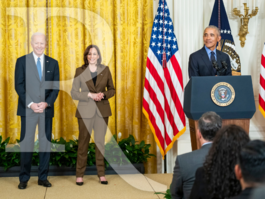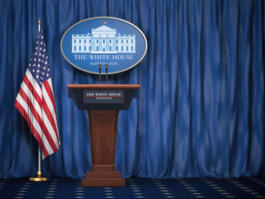Do You Recognize Your President?
A Commentary By Susan Estrich
There's an old saying that hard cases make bad law. The same rule, unfortunately, applies to presidential decisions.
What makes a case hard, of course, is when there is no "good" answer. The challenge for the decision maker is to find the least of the bad, the lesser of the evils. But by definition, a bad answer doesn't solve things (if it did, it wouldn't be a bad answer), but merely leaves them less bad than they would be if you made a different choice.
There is no glory in such a decision. No matter what you do, you're wrong. The only hope is to be less wrong, to cause less harm than you would by making an even worse choice.
Welcome to the president's Afghanistan dilemma.
The "good" answer to Afghanistan would be to turn back the clock to the point where we routed the Taliban and build on that success by securing as much of the country as possible, strengthening the government and winning the people's trust. Not possible. The good answer is the one Barack Obama used in his presidential campaign. It helped him get the job, but it doesn't help him one bit now that he has it.
All the other answers are bad or worse. Pulling out means a civil war and a safe haven for al-Qaida. Not good. Leaving the same number of troops in place means they don't have the resources to protect themselves, let alone the people. Also not good. On the other hand, a major buildup is ridiculously expensive at a time when even calculating the deficit is beyond most of our arithmetic skills. And there's real question whether it will make a significant difference given the weakness of the government there, not to mention the obstacles presented by the country's impossible terrain and contentious history. Afghanistan makes Iraq look easy, or at least easier.
So what's a decision maker to do? Focus on procedure. Courts do that a lot. If the substance doesn't work, try process. If there are no good answers, then maybe there's at least a good procedure.
By all reports, President Obama and his team have established one heckuva process for deciding whether to send more troops to Afghanistan. The president has met with his advisers repeatedly, has heard various options detailed, and has encouraged open and vigorous debate. Some people are criticizing him for doing too much process, especially as our kids sit there in harm's way. I don't begrudge him a minute of it if it helps him find the least bad answer.
The only danger of this long process is that people might start thinking it will have a positive outcome. It won't. There's no such thing. No matter what he decides or when, the government will still be weak and corrupt, the terrain all but impossible, and the task facing our troops absurdly daunting. No matter how many troops he sends, it won't be enough and it will be too many. And every time a soldier dies in the future, people will ask whether that was why. Obama's war is a real stinker.
I showed my students part of "The War Room," the documentary about the 1992 Clinton campaign. There was almost a collective shock in the room when Bill Clinton, in shorts and a T-shirt, shows up for the first time. He was so unbelievably young. My students had never seen that man. I could barely remember him. I wonder how soon it will be before the Barack Obama who ran for president is unrecognizable.
COPYRIGHT 2009 CREATORS.COM
See Other Political Commentaries
See Other Commentaries by Susan Estrich
Views expressed in this column are those of the author, not those of Rasmussen Reports.
Rasmussen Reports is a media company specializing in the collection, publication and distribution of public opinion information.
We conduct public opinion polls on a variety of topics to inform our audience on events in the news and other topics of interest. To ensure editorial control and independence, we pay for the polls ourselves and generate revenue through the sale of subscriptions, sponsorships, and advertising. Nightly polling on politics, business and lifestyle topics provides the content to update the Rasmussen Reports web site many times each day. If it's in the news, it's in our polls. Additionally, the data drives a daily update newsletter and various media outlets across the country.
Some information, including the Rasmussen Reports daily Presidential Tracking Poll and commentaries are available for free to the general public. Subscriptions are available for $4.95 a month or 34.95 a year that provide subscribers with exclusive access to more than 20 stories per week on upcoming elections, consumer confidence, and issues that affect us all. For those who are really into the numbers, Platinum Members can review demographic crosstabs and a full history of our data.
To learn more about our methodology, click here.



